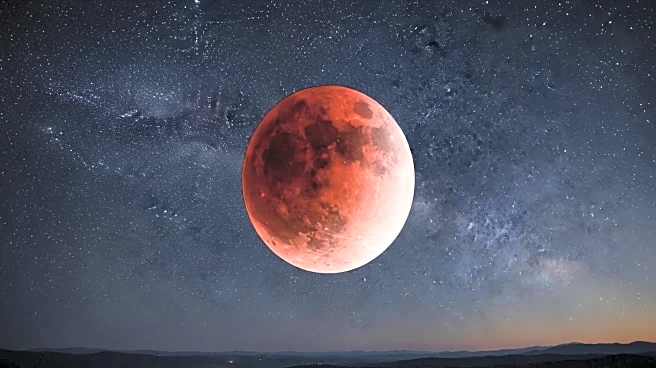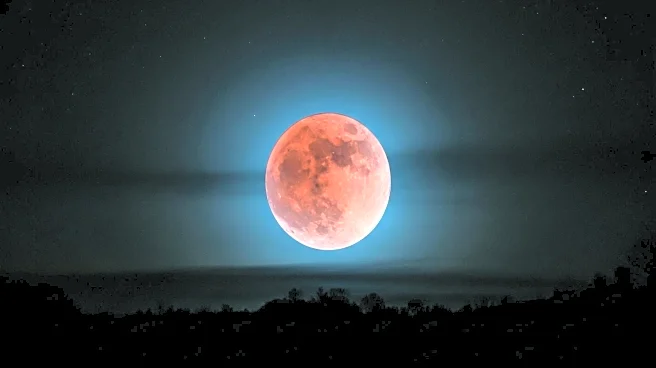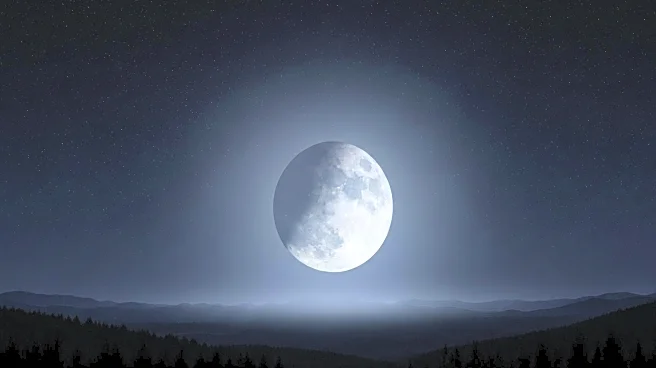What's Happening?
A total lunar eclipse, known as a blood moon, is set to occur on September 7, 2025. During this event, the moon will pass into Earth's shadow, causing it to appear reddish due to the scattering of sunlight through Earth's atmosphere. This phenomenon is visible during a total lunar eclipse when the sun, Earth, and moon align perfectly. The eclipse will be visible in parts of Australia, India, Cairo, and South Africa, but not in North America. The moon will be fully immersed in Earth's shadow for 82 minutes, with totality occurring between 1:30 and 2:52 p.m. Eastern Time. The next total lunar eclipse visible in the U.S. will be on March 2-3, 2026.
Why It's Important?
Lunar eclipses are significant astronomical events that offer a unique opportunity for observation and study. The blood moon phenomenon is particularly captivating due to its striking color change, which can inspire interest in astronomy and science. For regions where the eclipse is visible, it provides an opportunity for educational programs and public viewing events. Although not visible in North America, the event highlights the interconnectedness of global astronomical phenomena and encourages international collaboration in scientific research. The anticipation of future eclipses visible in the U.S. can stimulate interest and planning for educational and community events.
What's Next?
While this lunar eclipse will not be visible in North America, astronomers and enthusiasts can look forward to the next total lunar eclipse visible in the U.S. on March 2-3, 2026. Preparations for this event may include organizing public viewing sessions, educational workshops, and media coverage to engage the public and promote interest in astronomy. Additionally, advancements in technology and communication may enhance the ability to share live feeds and data from regions where the eclipse is visible, fostering a global appreciation for astronomical events.












